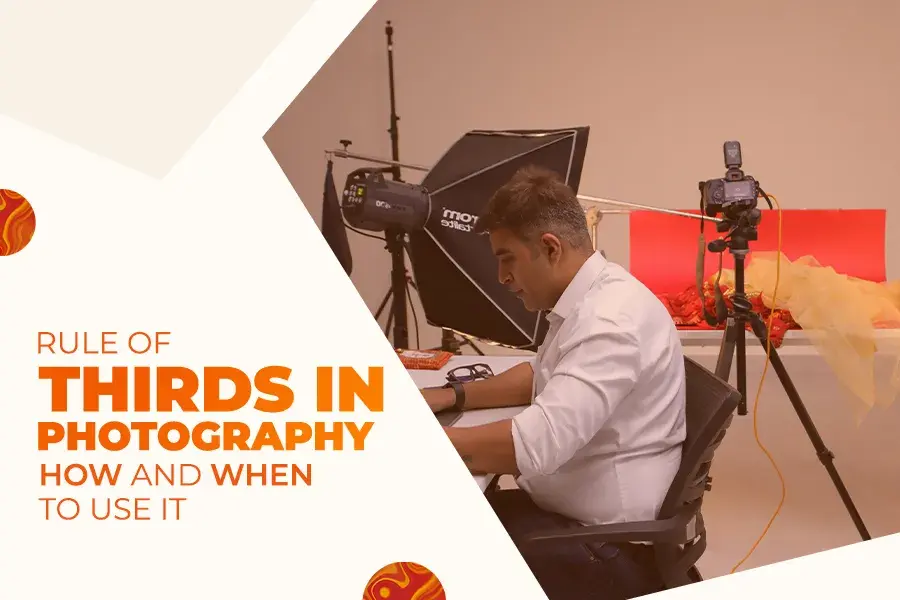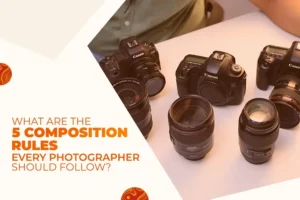Rule of Thirds in Photography: How and When to Use it

The rule of thirds is perhaps the most well-known “rule” of composition. And as one of the fundamental principles of photography, understanding and harnessing the power of the rule of thirds can transform your images from ordinary snapshots to visually captivating works of art.
Does every successful photo follow the rule of thirds? Definitely not. But every skill or art is built on certain foundations and understanding and mastering them are important for improving your abilities. Repetition is king when it comes to honing foundational skills. Practice leads to muscle memory and building trust in your eye, which eventually becomes an instinct for what works and what doesn’t in photography.
But what actually is the rule of thirds? Is it really that helpful? And is it ever okay to break the rule? Let’s find out!
What is the Rule of Thirds in Photography?
The Rule of Thirds is a basic principle in photography that helps you compose visually appealing and balanced images. Picture your viewfinder divided into a tic-tac-toe grid with two vertical and two horizontal lines, creating nine equally sized rectangles. At the points where these lines intersect are the “rule of thirds” points.
Here’s where the magic happens: instead of placing your main subject dead center, the rule suggests positioning it along one of these lines or at one of the intersections. This simple guideline can transform your photos from ordinary to eye-catching.
Why does it work? Well, by placing your subject off-center, you create a sense of balance and interest. It’s like arranging elements in a painting or composing a piece of music—there’s harmony in the placement. Plus, it naturally draws the viewer’s eye into the image, guiding their gaze and making the scene more engaging.
Now, keep in mind, that the rule of thirds isn’t the only trick up a photographer’s sleeve. Things like brightness, color, and size also play a role in grabbing attention. But the rule of thirds? It’s like giving your subject a VIP spot in the frame, ensuring it gets the attention it deserves.
How to Apply the Rule of Thirds in Photography
The rule of thirds can be the secret sauce for creating beautiful pictures. If you want your images to stand out from the crowd, mastering this composition technique is key. Let’s dive into some simple steps to make your photos pop using the rule of thirds.
Activate the Rule of Thirds Grid in Your Camera

First things first, make sure you can see the rule of thirds grid right in your camera viewfinder. Most cameras have this feature built-in, but it might be tucked away in the settings. Check your camera’s user manual to learn how to turn it on. Once activated, you’ll see those handy gridlines superimposed over your scene, ready to guide your composition.
Place Your Subject in the Sweet Spots

Now, here’s where the magic happens. When framing your shot, aim to position your main subject at one of the points where those gridlines intersect. This simple tweak can transform your photos from mundane to magnificent. It adds depth, balance, and visual interest to your composition, drawing viewers in and making your subject shine.
In this example, the bottle is the main area of interest, so we framed it on two-thirds of the image.
Give Priority to the More Important Elements
When using the rule of thirds in photography, you’re actually giving specific elements the spotlight they deserve.
Take the above bottle’s image for example, we placed the bottle on the right line of the picture to give it the importance it deserves. This creates a more dynamic composition, drawing the viewer’s eye to what’s important in the shot, which was the Blender’s Pride bottle in this case.
Complement the Main Subject

Once you’ve nailed down the placement of your main subject using the rule of thirds, it’s time to fill in the gaps with complementary elements. These supporting players add depth and context to your photo, improving the story you’re trying to tell. It’s like adding seasoning to a dish—it makes the flavour better and the whole experience more satisfying.
Crop in Postprocessing

Believe it or not, cropping can make a world of difference in refining your composition. Many photographers overlook this simple yet powerful tool but trust me, it’s worth exploring. With modern cameras bragging about a lot of megapixels, you can crop your images without sacrificing sharpness. It’s like giving your photo a makeover and fine-tuning it to perfection.
Rule of Thirds Grid in Lightroom

Photo editing software like Lightroom makes it easy to visualize the rule of thirds grid and adjust your composition accordingly. Here’s how to do it:
Click on the crop tool or press R.
You’ll see the rule of thirds grid overlaying your image.
If you prefer a different grid, press O to cycle through various overlays. Press Shift + O to change the orientation of a specific grid.
Don't Get Too Obsessed
While the rule of thirds is a handy guideline, it’s not compulsory for a good composition. There will be times when it simply doesn’t fit your scene, and that’s okay. Photography is an art, not a science, so feel free to bend or even break the rules when necessary. It’s all about finding what works best for your vision and creative expression.
Wanna learn more about creative composition and advanced techniques in product photography from an expert? Learn with FDS Masterclass, start here: Creative Product Photography
Rule of Thirds Examples

Breaking the Rule
Breaking the rule of thirds in photography is like going against the flow in any creative pursuit – you need to know the rule well to break it effectively. Some say the rule is most helpful for photographers just starting out. As you gain experience, you rely less on strict rules and more on your instincts.
It’s all about developing a good sense of what works and trusting your gut. While the rule of thirds still has its place, there are times when breaking it can lead to interesting results:
When everything's perfectly balanced
While we often aim for a balanced yet dynamic composition, there are times when perfect symmetry is what you’re after. In such cases, following the rule of thirds might not fit the picture.
When your subject steals the show
If your subject is beautiful enough on its own, placing it dead center might make it stand out even more. Think of amazing portraits or interesting close-ups where the subject deserves all the attention.

Download The Beginners Handbook For Product Photography
This handbook is your go-to guide for unleashing your creative potential. Don’t miss out – grab your FREE copy now!
When you're aiming for calmness
The rule of thirds in photography can bring a sense of energy or tension into your photo, which might not be what you’re going for. If you’re aiming for a quiet, calming vibe, breaking the rule could be the way to go.
Conclusion
There’s a whole world of composition beyond just the rule of thirds. Leading lines, shapes like triangles, symmetry, and the golden ratio are just a few examples. But what makes the rule of thirds so powerful is its simplicity and effectiveness. It’s like our brains are wired to appreciate images that follow it.
If you’re new to photography, using the rule of thirds in photography can train your eye to compose better shots instead of just clicking away. Using the rule of thirds generally leads to more visually appealing results. Give it a try—you might be pleasantly surprised.
To become a pro at product photography, consider checking out online courses like the ones offered by FDS Masterclass. Manish Soni, a professional commercial photographer, offers valuable insights that can help you improve your skills.
FDS Masterclass is an online education platform, which covers everything from product photography to learning how to start your own business in photography. So, if you’re serious about mastering product photography, these courses are definitely worth exploring! Click here to explore more: FDS Masterclass
FAQs
1. Why is it called the rule of thirds?
It’s called the rule of thirds because you divide your picture into nine equal parts using lines, like a tic-tac-toe board. Then, you place your main subjects along these lines or at the points where they meet.
2. What is the rule of thirds leading lines in photography?
Leading lines in photography are lines within a picture that guide your eyes towards a specific spot. When you use the rule of thirds, you often place these lines along the grid lines to lead viewers’ gaze and make the photo more interesting.
3. What are the golden rules of photography?
The “golden rules” of photography are simple guidelines that help you compose better pictures. They include things like the rule of thirds, which helps you place your subjects in a balanced way, and leading lines, which guide the viewer’s eye through the photo. These rules are not strict, but they’re handy tools for taking great shots.



